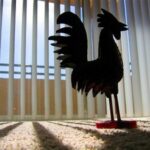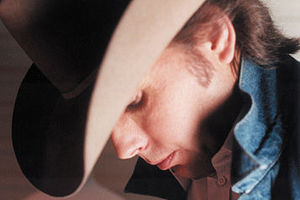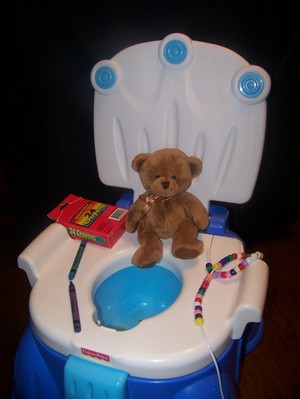A little over three years ago, my son, at that time age 10, began complaining of his right hip and upper leg hurting. He said it bothered him a lot whether he was walking, running, standing, sitting or laying down. I dismissed it as growing pains. Over the course of a three week period he continued to complain. I didn’t really think much of it and gave him pain medicine. During the third week when I noticed he was walking with a limp, a warning siren went off in my head that something definitely wasn’t right.
I immediately made an appointment with the doctor we went to. This doctor had only been practicing in our town for about a year and was brand new to the medical profession. I really liked him though and hoped that his medical expertise was as wonderful as his personality. The day I took my son to see the doctor, I explained to him when he had begun complaining and how he had described his pain. I told him about the limp. He asked if my son had fallen or been in any other kind of accident. The answer to both was no. The doctor said he wanted to have x-rays taken of the hip area. After he looked at the x-rays he told me he was pretty certain what the problem was, and it wasn’t anything too pleasant. He said to be 100% positive my son would need to have an MRI done.
The day of the MRI both my son and I were nervous. We had been told that he would have to lay in this tube-like chamber inside what looks like a semi trailer. It was supposed to take about twenty minutes and he’d have to be very still the entire time. If he moved too much then certain parts of the scanning would have to be started over. He was resistant about getting on the flat surface that went into the tube which surprised me because my son is usually very cooperative. I could see the fear in his eyes. It was very hard for me to stay strong for him and not break down and cry. The woman who was doing the MRI was very patient and understanding for the most part. About halfway through the scanning my son became restless and frustrated. He started to move around, talk, and get upset. The more I pleaded with him to lay still the worse he became. The woman tried to be gentle and reassuring but I think she sensed that I was scared too and my son could tell. She finally had to be firm with both of us, telling us that she would have to start all over if he couldn’t lay still for another ten minutes. The machine was pretty noisy which was all the more nerve wracking. Finally the testing was done though and we could go home.
A few days later we went back to the doctor. He told me that his suspicions were correct about what was wrong with my son. I was terrified as to what he was going to tell me. He said my son had a disease in his thigh bone called Legg Calve Perthes disease and he might have to have surgery. He explained that there is very little known about this disease, but it generally affects boys between the ages of 4 and8 but it has occurred in boys younger and older. He told me that for reasons unknown the blood supply is cut off from the thigh bone and the bone dies. As a result of this, the ball of the thigh bone doesn’t grow into the hip socket properly. This will cause a shortness in the leg affected. That is why my son began limping. His leg wasn’t growing properly because the ball wasn’t fitting into the hip socket. According to the website http://www.nlm.nih.gov/medlineplus/ency/article/001264.htm the ball of the hip collapses and becomes flat. Typically only one hip is affected but there have been recorded cases where both hips have been involved. As mysteriously as the blood supply is cut off to the thigh bone, within several months it is restored. This will bring in new bone cells which will gradually replace the dead bone over a two to three year period. The doctor said to begin with my son would start on physical therapy. He said that sometimes if the therapy is done it will help strengthen the leg and work the ball back into the socket. He was afraid that too much time might have already passed though and surgery might be the only thing that would get the ball back in the position it needed to be. He said that even though new bone cells would replace the dead ones over a few year period that he might always have a noticeable limp without surgery. There was also a great possibility of his hip getting arthritis when he’s as young as in his early twenties.
We were sent home with papers for in home exercises and an appointment was set up for therapy at the clinic in town. He had to do his at home exercises twice a day, which took about twenty minutes each session. For his therapy at the clinic he would go twice a week and work with different machines. My son became frustrated and angry very quickly and within about a month he was refusing to do his exercises. We were recommended to a children’s orthopedic surgeon an hour away. He made it clear that without the therapy my son would have no option but to have surgery. The doctor and I tried to convince him that the therapy would be much easier than having his leg cut open. He would also have to do therapy after his surgery too and if he didn’t he might not walk right again. He didn’t seem to care though, he said he wanted the surgery. This was in May that all of this was discussed and decided with the surgeon. My son’s surgery was scheduled for August, three months away.
In the meantime I took it upon myself to do online research to learn more of this disease and to find out what the prognosis was after the surgery. The first thing I found out while reading about Legg Calve Perthes was that the symptoms are the main keys to discovering the disease. I felt horribly ill, thinking that it was my fault for not taking my son’s pain more serious. I kept asking myself why didn’t I take him to a doctor instead of waiting until he started to limp. In talking with other people though, I was told that it seemed normal to not take a little leg pain seriously, as kids do go through a lot of pains as they grow. The most common symptoms of the disease are knee pain, persistent thigh or groin pain, hip stiffness, limited range of motion in the hip area, difficulty walking which would commonly be a limp, and a noticeable difference in leg lengths. A less noticeable symptom is the wasting of muscles in the upper thigh.
Next I read about the severities of the disease and what treatment was desired. If it’s caught soon enough, the physical therapy could be all that’s needed to help the child regain the mobility of the hip area and help get the ball back into the socket. Another thing that is important is to limit physical activity other than what is being done for the therapy. Running and jumping are the two worst things the child can do while experiencing this disease. Activities such as running and jumping have to be halted until a near full recovery is made. I suppose that the need for surgery on my son were because of two factors. The first would be that the disease wasn’t discovered soon enough. The other would be because he didn’t want to do the physical therapy. In my research I read that the surgery ranges from simple lengthening of a groin muscle, to major hip surgery to reshape the pelvis. My son had to have the major surgery. He was going to have a metal plate and pins put in to reposition the socket into the hip joint. He would have to wear a brace on his leg for several weeks. At night he would have to sleep with a foam wedge between his legs while still wearing the brace. He would also have to use a wheelchair,and eventually a walker until he could walk on his own again.
I had found a support group at yahoo groups for people who have a child who has this disease. I wanted to find out if what my son was experiencing and what the doctors were telling us was common. Some of the parents said that their child made a full recovery, others said another surgery was needed later on. I found out that all of the symptoms, problems and testing were all normal. I had only one concern left, and that was financial help. I kept getting directed to St. Jude’s by everyone that had advice to offer on the financial aspect. There was only one problem with that. The nearest one was four hours from where we lived. I decided it would just be easier to stick with the doctor and hospital an hour away and we’d figure something out on the money later.
The day of his surgery we had to be there by six a.m. to get him prepped. I think I was more nervous than he was. He settled in watching tv and playing video games while the nurses took his vitals and did some other things. I, on the other hand, sat there trying with every ounce of strength I had to not cry. My husband seemed complacent about it all. He always has been hard to read emotionally though. For all I know he may have been scared out of his mind too. I was glad that my son seemed to be taking it all in stride though. I didn’t want him to be afraid. Heaven knows I was afraid enough for him too. He was taken up at eight a.m. for the surgery. It was supposed to take two hours. It ended up taking closer to three hours and I was a nervous wreck. He was taken to recovery where the medicine he was given to sleep during the surgery could wear off. Only one of us could go in there with him when he started to wake up. My husband told me to go in. I don’t think he knew how to deal with it. When I walked in I was shocked at how he looked. His face was red and puffy. He was wrapped up so he’d stay nice and warm, plus they didn’t want him moving around too much. His poor little lips were chapped. I sat down beside him and gently laid my hand on his cheek. He was still drowsy and briefly opened his eyes before closing them again. When he finally fully woke up about ten minutes later, he was in pain and started crying. I did my best to try and comfort him but he just couldn’t be consoled. The nurses said he had been given medicine and couldn’t have anymore just yet. He hurt so bad that it wasn’t long that his emotional state got the best of me and I started crying.
Pretty soon it was time for him to go to his room in the children’s section of the hospital for such situations as this. I walked beside him the whole way, holding one of his hands. I wasn’t at all prepared for what happened when he needed to be moved from the gurney to the bed. He screamed in such pain that I felt like killing someone. I was shaking so badly by the time he finally was moved into his bed and calmed down that I thought I was going to have to be admitted for an emotional breakdown. My son just laid in that bed crying for what seemed like an hour. We tried to talk to him, get him to take a drink of water, find something on tv to watch, but all he could do was cry and yell. I had never seen my son like this….never. I felt so helpless. I thought if this would be the worst part, then the next few days would be ok. I found out soon enough that there was more difficulty to come.
The next day he was told that he would have to try and get his legs over the edge of the bed. The nurses wanted him to try and get some movement going so he wouldn’t stiffen up. He screamed and yelled and was very uncooperative. It was so hard to be there, knowing the nurses were only doing what they had to do for the best interest of my son, and I felt so helpless because I couldn’t get him to cooperate nor could I help him feel better. This went on for the whole four days he was there, though each day the extremes of his emotions lessened and he became more cooperative. The day he was to come home though, he was told he needed to walk with his walker a distance of twenty feet. He seemed to be in such pain, crying and yelling with each movement he made. It was hard to tell whether it was more from physical pain or emotional frustration.
My son’s recovery over the following months after his surgery seemed agonizing for him. He hated wearing his brace and especially hated the wedge he had to keep between his legs at night. In the morning when he’d wake up and first start to move, he’d be stiff and in pain. He spent most of his time in a wheelchair. At first we thought he would have to miss some schooling. We were told that he had to miss two weeks before he could get an in home tutor. Then in talking with the principal I found out that they would be happy to help him because of his being in a wheelchair. My son said he would give it a try. The teachers and other students for the most part were fantastic in helping him. I think it motivated his recovery also. I believe if he would have been basically confined to the house for so long without interaction of other kids and an atmosphere other than home, it would have gotten him quite depressed. I think he was in the wheelchair for about two months. He gradually got out of it and began using a walker. I don’t recall how long he had to keep wearing the brace on his leg and using the wedge at night. He had to go through more physical therapy also. This time he was more compliant about it. Because his right leg was still shorter than his left and it would take awhile for the right one to start catching up, he also had to have a little heel insert put in his right shoe. He still walked with quite a limp and it was difficult for me to watch him walk because it just broke my heart. Now two and a half years since the surgery, his limp is almost gone, he is strong and can run and jump and do so many things he had to avoid for so long. He had the plate and pins taken out of his hip 8 months after the original surgery. That was done on an outpatient basis and wasn’t bad at all.
We were very blessed on the financial aspect of the whole ordeal. The doctor was willing to work with us on our bill to him for the office visits and fortunately insurance covered most of it and the physical therapy. As for the hospital where the original surgery was done, they completely wrote off our portion of the bill and were satisfied with what insurance paid. We never even asked them either. The original surgery was done at Methodist Medical Center in Peoria,Illinois. A fantastic hospital it is with a wonderfully warm and inviting atmosphere and a great staff. By the time my son had to have the outpatient surgery we had found an organization called The Division of Specialized Care for Children. I know they have branches all over the state of Illinois. I am not sure about the rest of the country though. They specialize in financial help for kids with disabilities, especially birth defect related disabilities. They will be taking care of anything my son might need done until I believe he’s 18 as a result of his disease.
In conclusion, it may sound like a horrible ordeal for a child to go through, but trust me, if you ever have a boy complaining of pain especially in the hip area, but it could also be the knee, or if they start having trouble with leg movement or develop a limp, please make sure you take them to a doctor right away. It’s better to be safe than sorry.








